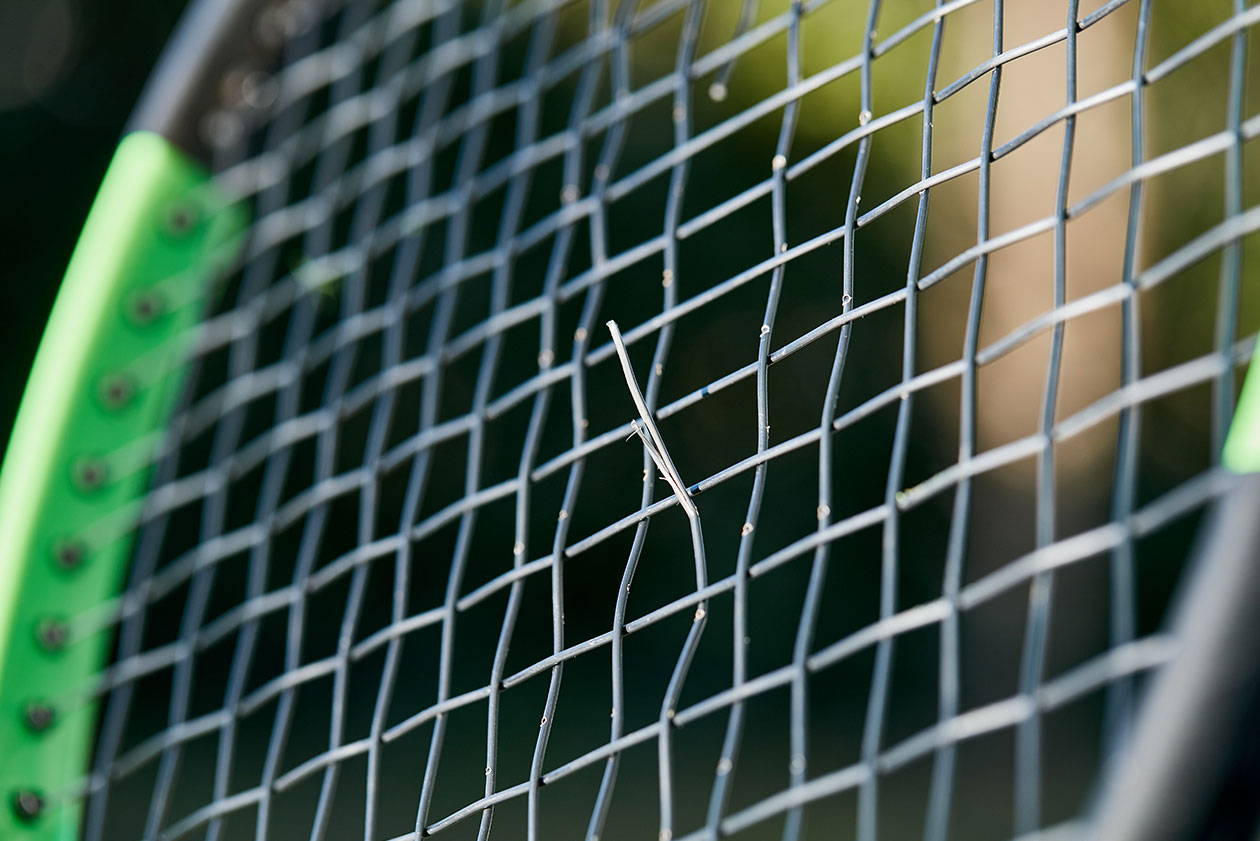Q: After breaking a string, is it okay to leave it like that? Do I really need to cut all the strings?
A: I would absolutely recommend cutting all the strings to release the tension. This is even more important if the racquet is going to be sitting for any period of time before being restrung. Once the strings are cut (and the tension is released), it is fine to just leave the bits of string in the racquet. Snipping the strings is important because of the tension on the strings and the stress placed on the frame by the strings. When a string breaks, it immediately loses tension and the strings around it loosen up as well. This results in a string bed with varying tension that exerts uneven forces on the racquet. This uneven force can ultimately cause a frame to bend or warp, which is obviously not ideal for your racquet or your game.
The best and quickest way to remove the strings without unnecessarily stressing your frame is to snip diagonally at the intersection of main and cross strings. Start in the middle of the racquet and work your way diagonally out to the edges. Make sure to snip evenly in both directions—don't just start in the middle and snip diagonally up. Snip one above where you started, then one below, then one above, and so on. You really don't need any special tools to cut the strings. Regular household scissors can do the job when there aren't alternatives, but I personally find them a bit cumbersome. The clippers included with most stringing machines or in stringing toolkits are obviously fine and, surprisingly, pruning shears make very quick work of tennis strings.
Did you know that we employ two professional stringers, including a Master Racquet Technician? That’s the highest level of achievement that United States Racquet Stringers Association (U.S.R.S.A.) offers. Do you have a question for one of our stringers? Ask it in the comments below or send it to us and we'll provide you with an answer.

